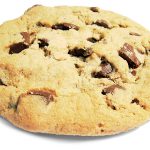One of the most common New Year’s resolutions is the renewed effort to follow a healthier diet and lose weight. This is often easier said than done and the extra weight gained over the holidays can make you feel even less empowered. The good news is that losing weight and taking back your health does not mean that you have to cut various foods out completely. Cheese is a great example of one food that can still be enjoyed provided you make the right choices.
Hard and semi-hard cheeses are some of the most popular on the market and they are used in various types of meals. An ounce of low-fat cheddar contains 6 grams of cholesterol which means that it is one of the best choices for those on low-cholesterol diets. Part-skim mozzarella contains 15 milligrams which is exactly half the amount found in whole mozzarella. As for provolone, another delicious favourite, every ounce contains 20 milligrams of cholesterol. Swiss cheese tastes great with a variety of foods and at just 26 milligrams of cholesterol per ounce, it’s easy to enjoy without feeling guilty.
If you prefer feta cheese, you will be pleased to note that it has just 25 milligrams of cholesterol per ounce which makes it one of the heathiest of all soft cheeses. One tablespoon of cream cheese or one ounce of cheese spread has less than 16 milligrams of cholesterol which makes these two the perfect treat! As for ricotta and cottage cheese, they have 125 milligrams and 36 grams of cholesterol per cup respectively which puts them on the heavier end of the scale.
Apart from checking for the cholesterol levels in your food, it’s also important to pay attention to saturated fat. Low-fat cheeses have less saturated fat. For example, cheddar cheese contains 6 grams of saturated fat per ounce. The recommended daily intake of saturated fat is just 16 grams which is good to keep in mind if you want those arteries to stay clear!
To conclude, the two rules to remember are to look for low-fat cheeses and to always enjoy in moderation. Check the nutrition labels on the packaging before you purchase a particular type of cheese and make sure that you understand the ratios. For instance, many packages will include the amount of fat per 100 grams. If you have a 400 or 500 gram block of cheese, you will need to multiply this number by 4 or 5 in order to determine the total quantity of fat. Afterwards, you can calculate just how much of this particular cheese can be allowed into your diet.


Be the first to post a comment.